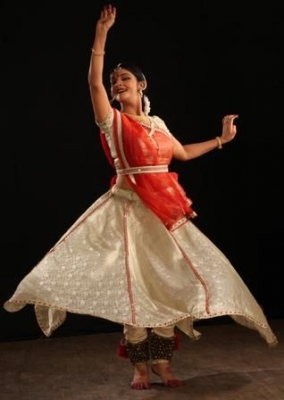
Kathak is believed to be originated in North India where Kathakars (storytellers) used to travel to different places to communicate stories from ancient scriptures like Ramayan, Mahabharat and Lord Krishna stories through dance, music and songs. It got its name from the word “katha” which means “story” in English. It is known for its spins, outstanding rhythmic footwork, however, it also involves hand gestures, facial expressions and eye work. Both male and female dancer can be seen dancing together in this form of classical dance.
In Kathak, the dancer wears a sari with choli, or long embroidered skirt with choli with ornaments and ghunghru (musical anklet). The male dancers wear a combination of chudidar kurta and a dupatta tied at the waist. The dancers do not wear heavy makeup, it remains sharp and fine to show the expressions. A bun with a garland is also a part of the costume.
The ghunghru are very heavy and used to produce a large variety of sounds to show heavy rains, the sound of horse riding, running train, etc.
Picture Credit : Google




